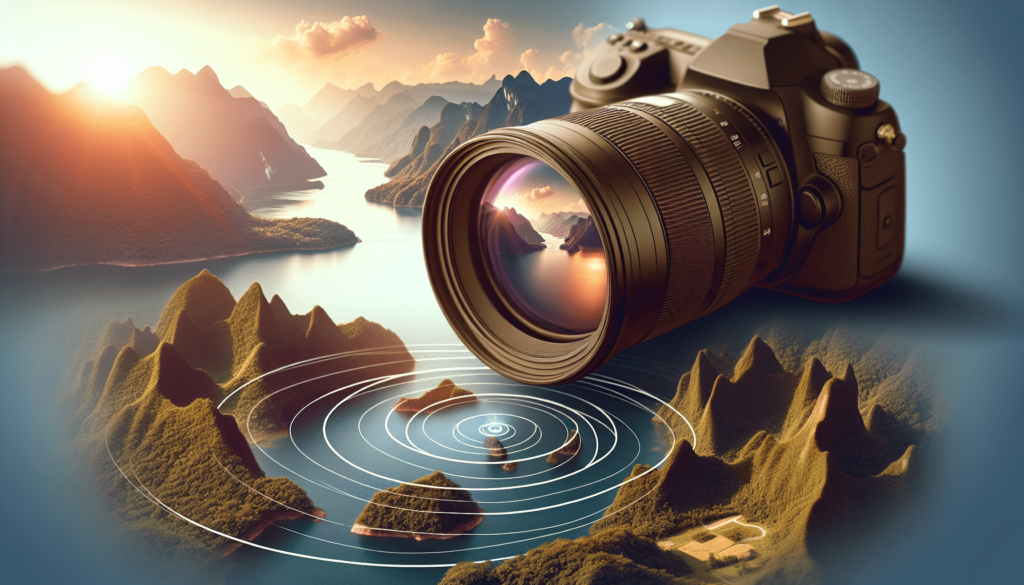Welcome to an introduction to the concept of hyperfocal distance in photography! Have you ever wondered how to keep everything in focus in your photos, from the foreground to the background? The hyperfocal distance is a technique that allows you to maximize the depth of field in your images, resulting in crisper, more detailed photographs. By understanding and utilizing this concept, you can elevate the quality of your photography and capture stunning images with ease. Let’s explore what hyperfocal distance is and how you can apply it to enhance your photographic skills. Have you ever wondered what hyperfocal distance is and how it can improve your photography skills? In this article, we will delve into the world of hyperfocal distance and explore how understanding and utilizing it can take your photos to the next level. Let’s get started!

Understanding Hyperfocal Distance
Hyperfocal distance is a crucial concept in photography, especially when it comes to capturing landscapes and scenes with vast depth. It is defined as the focus point at which everything from half the distance to infinity is acceptably sharp. By focusing at the hyperfocal distance, you can ensure that both near and far objects in your frame are in focus, maximizing the overall sharpness of your image.
How Does Hyperfocal Distance Work?
Imagine you are taking a photo of a beautiful landscape with a stunning mountain range in the distance. If you focus on the mountains, the foreground might appear blurry, and vice versa. However, by focusing at the hyperfocal distance, you can achieve sharpness from the nearest point of acceptable focus to infinity. This allows you to capture the entire scene with clarity and detail.
Calculating Hyperfocal Distance
Calculating the hyperfocal distance may seem daunting at first, but with a basic understanding of the concept, you can easily determine the ideal focus point for your photos. The hyperfocal distance depends on three key factors:
- Focal Length of Your Lens: The longer the focal length, the shorter the hyperfocal distance.
- Aperture Setting: Larger apertures (small f-stop numbers) result in a shorter hyperfocal distance.
- Sensor Size: Full-frame sensors have different hyperfocal distances compared to crop sensors.
Understanding the Formula
The hyperfocal distance can be calculated using the following formula:
Hyperfocal Distance = (Focal Length)^2 / (Aperture x Circle of Confusion)
Where:
- Focal Length: The focal length of your lens in millimeters
- Aperture: The f-number setting of your lens
- Circle of Confusion: The acceptable amount of blur for a sharp image (depends on sensor size)
By plugging in these values, you can determine the hyperfocal distance for a specific focal length, aperture setting, and sensor size.

Importance of Hyperfocal Distance in Photography
Mastering hyperfocal distance is essential for photographers looking to capture sharp and detailed images, especially in landscape photography. By understanding where to focus to achieve maximum sharpness throughout the scene, you can create visually appealing photos that draw viewers into the frame.
Enhancing Depth of Field
One of the primary benefits of utilizing hyperfocal distance is the ability to enhance the depth of field in your images. By focusing at the hyperfocal distance, you can ensure that both foreground and background elements are in focus, creating a sense of depth and dimensionality in your photos.
Maximizing Sharpness
Achieving maximum sharpness in your images is a goal for many photographers, and understanding hyperfocal distance is a key tool in achieving this. By focusing precisely at the hyperfocal distance, you can ensure that your images are sharp and detailed throughout, from near to far elements.

Practical Tips for Using Hyperfocal Distance
Now that you understand the importance of hyperfocal distance in photography, let’s explore some practical tips for effectively using this technique in your own work.
1. Use a Hyperfocal Distance Chart
There are numerous hyperfocal distance charts available online that can help you determine the hyperfocal distance for different focal lengths and aperture settings. These charts provide quick reference points for various scenarios, allowing you to focus quickly and accurately in the field.
2. Experiment with Different Aperture Settings
The aperture setting plays a crucial role in determining the hyperfocal distance, so don’t be afraid to experiment with different f-stops to see how they affect the sharpness of your images. Remember that smaller apertures result in a larger depth of field but may introduce diffraction, so find the right balance for your desired outcome.
3. Focus One-Third into the Scene
A common technique in landscape photography is to focus approximately one-third into the scene to maximize depth of field while ensuring that distant objects remain sharp. By using this approach in conjunction with the hyperfocal distance, you can create stunning and detailed landscape images.

Examples of Hyperfocal Distance in Action
To further illustrate the concept of hyperfocal distance, let’s look at a couple of examples where understanding and applying this technique can make a significant difference in the sharpness and overall quality of your images.
Example 1: Landscape Photography
Imagine you are capturing a sunrise over a serene lake, with majestic mountains in the distance. By focusing at the hyperfocal distance, you can ensure that both the shimmering water in the foreground and the distant mountains are sharp and detailed. This results in a breathtaking image that conveys the beauty and tranquility of the scene.
Example 2: Architecture Photography
When photographing architectural elements such as buildings or monuments, using hyperfocal distance can help you achieve maximum sharpness throughout the structure. By focusing at the hyperfocal distance, you can ensure that intricate details on the facade as well as distant features are captured with clarity and precision, resulting in compelling architectural photographs.

Conclusion
In conclusion, understanding and utilizing hyperfocal distance in your photography can elevate the sharpness and overall quality of your images, particularly in landscape and architectural photography. By mastering the concept of hyperfocal distance, you can achieve maximum depth of field, sharpness throughout the scene, and visually striking photos that captivate viewers. So next time you’re out shooting, remember to consider the hyperfocal distance and take your photography skills to new heights!

Comments are closed